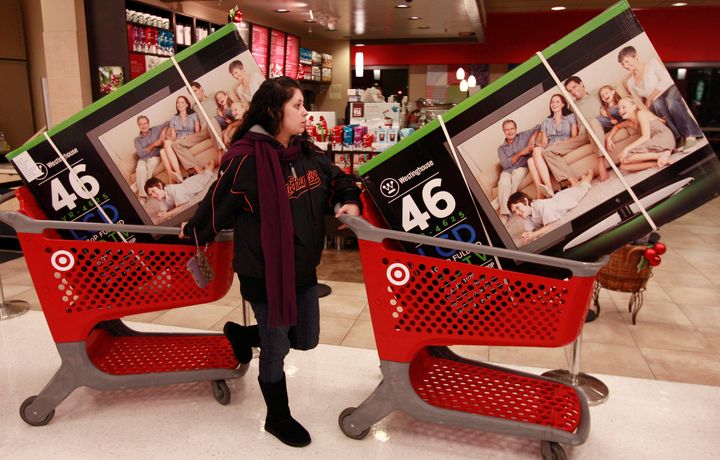
Consumer credit posted a second straight eye-popping monthly gain in December, according to a new Fed report, which some are taking as a sign of a new surge in the economy. There are a couple of reasons to not get too excited just yet.
First, the $19.3 billion jump in consumer credit in December was driven mainly by a $16.5 billion surge in "non-revolving" credit, which includes student and auto loans. "Revolving" credit, or credit cards, grew by a more modest $2.8 billion.
To the extent that people are using credit cards and taking out auto loans more, that's a positive sign for economic growth -- although maybe not the healthiest growth. More on that later.
But the biggest gain in "non-revolving" credit in December came from lending by the "federal government," which is student lending. That grew by $8.8 billion. A surge in student lending is not always a wholly positive sign for the economy, warns IHS Global Insight U.S. economist Gregory Daco.
"It may indicate people are finding it more difficult to finance their kids’ education," Daco said in a phone interview. "That may not be such a good thing."
The number might also have been skewed by seasonal adjustment factors. December is not typically a big month for student lending, so some unusually large increase in borrowing in the month, for whatever reason, might have thrown the seasonal adjustment off and amplified the increase. These numbers are volatile and can be revised dramatically.
Clearly, consumer credit is on the rebound. November posted another ridiculously huge jump in consumer credit -- $20.4 billion. Together, November and December's growth in credit was the biggest two-month increase since 2001.
And November's credit gain was more heavily weighted toward credit cards and auto loans, and so was a better sign of real consumer spending. Of course, we knew about that already, having seen a 2 percent gain in consumer spending in fourth-quarter GDP data released last month.
Given the big skew toward student loans in December, it is still too early to declare that consumers are feeling so frisky about the recovery that they're out racking up debt to finance spending sprees. It is also possible that they are using credit more because wages aren't rising enough to allow them to pay for stuff they need without going into hock.
In any event, we probably do not want another economic recovery driven by consumers going into hock. Given the lingering sting of the debt-fueled financial crisis, it seems unlikely we will get one soon.
"Consumers are slowly returning to the use of credit, but it's a very cautious return," said Daco.